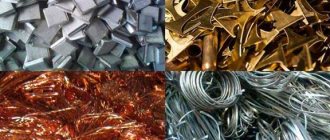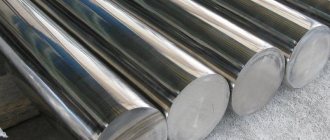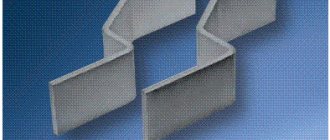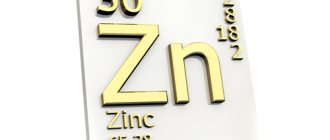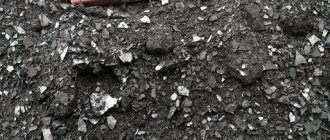02Dec
- By: Semantics
- Uncategorized
- Comments: 0
A very large number of alloys are used in metallurgy. At the same time, it is almost impossible for an ordinary person to remember and distinguish all the brands and varieties, and it is not necessary. We offer an overview that will expand the consumer’s knowledge and give an understanding of what the main types and classes of steel are, their properties for purpose and structure, and the use of the material. In everyday activities, this knowledge can be useful in determining the lifespan of a metal product, as well as in knowing what measures need to be taken to increase corrosion resistance, protect against chemical reactions, and renew the external coating.
At the same time, a metallurgist, mechanic, turner, metal cutter and any specialist involved in metalworking pays more attention to other characteristics - strength, toughness, fragility, melting point. All this gives him the necessary knowledge to select the optimal technologies for processing. Designers and machine builders use this information to determine the scope of use of the steel element, as well as to decide from what material the metal structure should be made to achieve certain parameters.
Influence of alloying elements
Alloying elements are introduced into steel to increase its structural strength. The main structural component in structural steel is ferrite, occupying at least 90% by volume in the structure. By dissolving in ferrite, alloying elements strengthen it. The hardness of ferrite (in the state after normalization) is most strongly increased by silicon, manganese and nickel - elements with a lattice different from the α-Fe lattice. Molybdenum, tungsten and chromium have a weaker effect.
Most alloying elements, while strengthening ferrite and having little effect on ductility, reduce its impact strength (with the exception of nickel). At levels up to 1%, manganese and chromium increase toughness. Above this content, the toughness decreases, reaching the level of unalloyed ferrite at 3% Cr and 1.5% Mn.
An increase in carbon content in steel increases the influence of the carbide phase, the dispersion of which depends on the heat treatment and composition of the alloy. To a large extent, the increase in structural strength when alloying steel is facilitated by an increase in hardenability. The best result in improving the hardenability of steel is achieved by alloying it with several elements, for example Cr + Mo, Cr + Ni, Cr + Ni + Mo and other combinations of various elements.
The high structural strength of steel is ensured by the rational content of alloying elements in it. Excessive alloying (with the exception of nickel) after the required hardenability has been achieved leads to a decrease in toughness and facilitates brittle fracture of the steel. Chromium has a beneficial effect on the mechanical properties of structural steel. It is introduced into steel in amounts up to 2%; it dissolves in ferrite and cementite.
Nickel is the most valuable alloying element. It is introduced into steel in an amount from 1 to 5%. Manganese is added to steel up to 1.5%. It is distributed between ferrite and cementite. Nickel significantly increases the yield strength of steel, but makes the steel sensitive to overheating. In this regard, to refine the grain, carbide-forming elements are introduced into the steel simultaneously with nickel.
Silicon is a non-carbide-forming element, and its amount in steel is limited to 2%. It significantly increases the yield strength of steel and, at a content of more than 1%, reduces viscosity and increases the cold brittleness threshold.
Molybdenum and tungsten are carbide-forming elements that are mostly soluble in cementite. Molybdenum in an amount of 0.2-0.4% and tungsten in an amount of 0.8-1.2% in complex alloy steels contribute to grain refinement, increase hardenability and improve some other properties of steel.
Vanadium and titanium are strong carbide-forming elements that are introduced in small quantities (up to 0.3% V and 0.1% Ti) into steels containing chromium, manganese, and nickel for grain refinement. An increased content of vanadium, titanium, molybdenum and tungsten in structural steels is unacceptable due to the formation of special carbides that are difficult to dissolve when heated. Excess carbides, located along grain boundaries, promote brittle fracture and reduce the hardenability of steel.
Boron is introduced to increase hardenability in very small quantities (0.002-0.005%).
Types of steels and their features
We are talking about alloys that contain iron (at least 45%), carbon (0.1% to 2.14%) and additional alloying elements. More carbon ones say that we are dealing with cast iron. Metals are classified according to different parameters. For some, the amount of C present is important, so they are primarily divided into those where there is a lot of this element and where there is little of it. For others, it is the content of alloying additives that change the qualities of the material. Therefore, alloyed and high-alloyed steels are distinguished - 2 types of steel, which determines their use. The latter have increased strength characteristics. But why dope with a new chemical element? The fact is that in the presence of carbon, a controlled reaction occurs, in which iron acquires unique properties - increased strength and impact resistance. But malleability and ductility can change for the worse, and for this reason it is worth adding new substances. Now let's go through the most common classifications and types.
Classification of steel by carbon content: types and properties
This is a fairly pure alloy with very few impurities. The main components are iron and carbon. A very popular option, it is actively used in industry - from making nails to airplane wings. At the moment, the category occupies up to 80% of total production and includes up to 2 thousand brands. Moreover, the characteristics vary depending on the percentage of components. Hardness, fluidity, ductility and density depend on this. Based on the amount of C, low-carbon, medium-carbon and high-carbon compositions are distinguished, which, accordingly, have different structures - ferrite and pearlite, cementite.
Peculiarities:
- There are few impurities, they are all of natural origin. Some are beneficial, such as manganese and silicon, while others are harmful, such as sulfur and phosphorus.
- CS has no specialization; it is aimed at general industrial use.
- You can apply all available metalworking methods to them.
Alloy steel type
These are alloys that have additional components. Alloying elements increase the basic qualities of the material and change their purpose. Both physical and chemical characteristics change. All of them are also divided into three groups depending on the percentage of additives:
- low alloyed – up to 4%;
- medium alloyed – up to 11%;
- highly alloyed - from 11% and above.
There is also a classification according to the special properties that they receive, for example, there are heat-resistant or corrosion-resistant. And the last distribution is made according to the name and proportion of those substances that are included as additional. So, steels can be chromium, chromium-nickel, chromium-manganese. Here is an example of brands that contain an alloying element:
| Marking | Additive | Percentage of trace element | Microstrength, kg/mm2 |
| 40C | Si | 0,98 | 325 |
| 40G2 | Mn | 2,23 | 380 |
| 40Х2 | Cr | 2,04 | 350 |
| 40H | Ni | 0,84 | 370 |
| 40M | Mo | 0,33 | 370 |
In addition to content, classification by structure is important. Let's look at 5 structural types of steel and their characteristics. Because there may be different granularity and molecular bonding of particles.
Austenitic
The doping level here is very high. Therefore, when solidified, a face-centered crystal lattice is obtained. This allows the material to remain unchanged even at ultra-low temperatures - down to -200 degrees. The main additives are nickel and chromium. The first allows you to increase ductility and heat resistance, and the second - corrosion resistance. By changing the proportions of the components, different properties can be obtained in predominant terms.
Ferritic
This is a certain phase of crystallization when a certain amount of fine grain comes out. It helps prevent the appearance of cracks and increased brittleness as the temperature increases. In terms of content, the alloy must contain sufficient alloying elements and carbides. Additives can include vanadium and silicon. The material is actively used in the field of metal structures. But if it is cheap enough, then there is a risk of unpleasant properties, namely, increased grain growth and intergranular corrosion (due to chromium). In addition, it should be noted the presence of magnetic characteristics.
Martensitic
This is a special needle-like structure. They usually contain a small percentage of carbon (about 0.15%) and a lot of chromium - up to 17%. Nickel, tungsten, vanadium and molybdenum can be added as alloying substances. Martensite (solidification method) almost always appears after quenching and is a carbonaceous solution in alpha iron. When describing steel, it is worth talking about a tetragonal crystal lattice, increased strength and hardness. This is explained by the existing internal tension. Also characterized by alkali resistance, hardening ability, low ductility, but high heat resistance.
Bainitic
Usually this stage of crystallization is called intermediate, since it is formed as one of the stages. But under certain conditions the structure can be preserved. To do this, in order to increase resistance to changes, Mn, Si, Cr, Mo, B are introduced. The C content is low, because this element makes weldability and resistance to brittle fracture worse.
Perlite
One of the most common structural types, it is distinguished by the fact that the amount of impurities is relatively small. Thus, they fall into the low or medium alloy class. The material is often used to make tools and high-strength structures. Cutting is quite simple, but only after preliminary annealing or after rolling. And to increase wear resistance, quenching in oil and then tempering the metal helps a lot. There are also disadvantages - the heat resistance is quite low, this is explained by the small inclusion of chromium, so use is not advisable even at 550 degrees and above. Also, in addition to structure and content, alloys are distinguished according to qualitative criteria. Let's name 4 main types of steel according to quality. First, let's present in a table the number of some undesirable additives:
| Reflection in marking | Name | Sulfur inclusions, % | Phosphorus, % |
| – | Ordinary | 0,055 – 0,06% | 0,05 – 0,07% |
| – | High quality | 0,035% | 0,035% |
| A | High quality | 0,025% | 0,025% |
| Sh | Particularly high quality | 0,015% | 0,015% |
Standard
This is the most inexpensive variety - this is its main advantage. With a verified composition, there may be unnecessary impurities, that is, those that are not included in the “recipe”. Such additives can even be non-metallic substances. This class also has subclasses. This:
- A. It is not indicated on the labeling, it is implied as the most popular. The chemical list is not specified, but there are guarantees on the physical properties of the metal.
- B. The letter is placed at the beginning of the stamp. Indicates that a detailed list of components will be listed.
- B. Both characteristics are stated and guaranteed.
We do not recommend using this steel for the manufacture of objects that must have increased strength and resistance to loads.
High quality
The advantages of the brand are obvious. In addition to the fact that there are much fewer impurities here and they are more regulated (exact percentage), the smelting method is also more advanced. Open hearths and oxygen envelopes are used. This integrated approach leads to the fact that the material can be used under conditions of increased load.
High quality
In addition to the fact that the amount of non-metallic impurities is also reduced, the percentage of carbon content is also reduced. Melting takes place in electric furnaces. The use of elements made from such steel will last for a long time without the risk of rapid wear or breakage from load. But there is also a peculiarity - it is worth considering that the viscosity will be higher than that of the previously presented classes.
Particularly high quality
The manufacturing technologies used are distinguished by their modernity. They do not allow the inclusion of foreign substances in the composition, the result is an alloy that can be called almost crystal clear - only a hundredth of a percent will possibly have phosphorus or sulfur. Manufacturing takes place in electric crucibles with electroslag remelting. And the last five are types of steel according to their purpose and special characteristics of the metal. The classification includes the following types of steel compositions.
Structural
The most common. They are used to create metal structures - machines and machine tools, large and small mechanisms and parts. All of them are divided into mechanical engineering and reinforcement, or simply construction. The latter are easy to weld, and with this connection they remain very strong. It is also important which group is assigned to the brand - special or general purpose. After low tide, heat treatment is usually required - hardening and tempering or normalization.
Instrumental
They are used to create tools - metal cutting edges, presses, etc. These are excellent drills, cutters and other things. The alloy is distinguished by an increased amount of carbon - at least 0.7%.
Characteristic features include strength, since steel must be stronger in mechanical contact with another. But wear resistance may not be high enough.
Stainless
They are actively used for consumer goods - from samovars and kitchen utensils to materials for house cladding and construction. The name implies the main advantage - it is highly resistant to corrosion. This is usually ensured by the chromium or nickel content.
Heat resistant
They are resistant to excessively high temperatures. And they can be exposed to heat for a long time without collapsing or deforming. This allows you to make elements of cars and airplanes that must be constantly in use and heat up, but not wear out. For this category of compositions, the most important indicator is the melting point. If it is high, then the use of metal in these conditions is safe.
Heat resistant
They are also scale resistant. Their advantage is that at elevated temperatures that exceed 550 degrees, they are not subject to rusting and other processes under the influence of oxygen and other gaseous media. How can this be achieved? The fact is that they contain elements that, when heated, form a corrosion-resistant film on the metal surface. It could be chromium or silicon.
Marking of alloy steels
The grade of high-quality alloy steel consists of a combination of letters and numbers indicating its chemical composition. Alloying elements have the following designations (GOST 4547-71): chromium (X), nickel (N), manganese (G), silicon (C), molybdenum (M), tungsten (B), titanium (T), aluminum (Yu) , vanadium (F), copper (D), boron (R), cobalt (K), niobium (B), zirconium (C). The number after the letter indicates the content of the alloying element as a percentage. If the figure is not indicated, then the alloying element contains up to 1.5%. In structural high-quality alloy steels, the first two digits of the grade indicate the carbon content in hundredths of a percent. In addition, high-quality alloy steels have the letter A at the end of the grade, and especially high-quality ones have the letter Ш.
For example, steel grade 30ХГСН2А: high-quality alloy steel contains 0.30% carbon, up to 1% chromium, manganese, silicon and up to 2% nickel; steel grade 95Х18Ш: especially high-quality, smelted by electroslag remelting with vacuum, contains 0.9-1.0% carbon; 17-19% chromium, 0.030% phosphorus and 0.015% sulfur.
Alloyed structural steels are divided into case-hardened, improved and high-strength.
Hardenability
Each steel has a “limiting” cross-sectional size, above which it is impossible to achieve full hardening (increase in hardness). To achieve optimal section properties, either a higher quality material or an increased cooling rate is required, possibly even using lower temperature coolants (continuous flow cooling).
However, higher quenching rates always increase the risk of warping or cracking, and rapid cooling reduces toughness.
The following factors influence hardenability:
- Percentage of aluminum and nitrogen. Some carbon and low-alloy steels contain more than 0.3 ... 0.5% aluminum (added for deoxidation), which reduces hardness after hardening. The effect of nitrogen is the same;
- The presence of an uncontrolled atmosphere inside the hardening furnace. In furnaces with a protective atmosphere, hardenability always increases;
- The presence of nickel and chromium in the chemical composition reduces the depth of the hardened layer at high quenching temperatures, and when the cooling rate increases, it promotes temper brittleness. To maintain the required sorbitol structure, tempering is carried out at the highest possible temperatures. If the hardness indicators are unsatisfactory, they resort to cold hardening.
For steels with a high carbon content (high-speed), hardenability is also affected by surface decarburization.
Cementable alloy steels (GOST 4543-71)
Case-hardened steels are low-carbon (up to 0.25 C), low- (up to 2.5%) and medium-alloyed (2.5-10% total content of alloying elements) steels. These steels (Table 4) are intended for parts of machines and devices operating under friction conditions and experiencing shock and variable loads. The performance of such parts depends on the properties of the core and the surface layer of the metal. Case-hardening steels are saturated with carbon from the surface (cemented) and subjected to heat treatment (hardening and tempering). This treatment (see Chapter V) provides high surface hardness (HRC 58-63) and maintains the required toughness and specified strength of the metal core.
Table 4. Cementable alloy steels
Technologies used
Three improvement options have become prevalent:
- Hardening at elevated temperatures (in molten salt or hot oil), which helps to significantly reduce the deformation of parts. This process is used mainly for alloy steels and parts with sharp differences in cross-sections;
- Austenitization is an option implemented for products with thin profiles. Used for most grades of medium or high carbon steels, as well as for large parts made of alloy steels. Austenitization requires high-temperature quenching and holding, usually in molten salt, but it minimizes the risk of shape distortion, and the resulting structure does not require subsequent tempering;
- Hardening at normal temperatures in water or oil, but followed by two-stage tempering: first at higher and then at lower temperatures. It is used for spring steels in which the formation of tempering sorbitol is difficult.
For improved tool steels, instead of tempering, annealing is carried out, and the hardening temperature (compared to the recommended) is increased by 20...300C. This heat treatment is provided after rough metal-cutting operations.
What kind of steel is upgradeable? This question is often asked by thermal experts, given that the class of products improved by heat treatment is not clearly defined. According to modern views, two criteria are mainly taken into account - hardenability and cold brittleness.
Improved alloy steels (GOST 4543-71)
These are medium-carbon (0.25-0.6% C) and low-alloy steels. To ensure the necessary properties (strength, ductility, toughness), these steels (Table 5) are thermally improved (see Chapter 5), subjected to hardening and high tempering (500-600°C).
Table 5. Improved alloy steels
Cold brittleness
Cold brittleness is a phenomenon of reduced ductility of a material at room temperatures. The danger lies in the fact that outwardly the workpiece looks normal, but during machining it warps and then cracks. Cold brittleness causes especially great harm to parts with thin ribs and blades that are made of high-carbon steels.
To reduce the effect of cold brittleness, it is necessary to increase the viscosity of the product material. The criterion is the intensity parameter of the drop in impact strength, which is called the temperature of transition from the plastic to the brittle state. Typically this figure is around -75°C. The more carbon in the steel, the more intense the decrease in viscosity with temperature.
Cold brittleness is also affected by the presence of a martensitic structure, as well as an increased percentage of sulfur and phosphorus in the pulp composition. If it is not possible to change the enhancement mode, you should either change the material or constructively eliminate areas that have thin and sharp edges.
High strength alloy steels
Improved and case-hardening steels after heat treatment give strength up to σв = 1300 MPa and toughness up to KS = 0.8-1.0 MJ/m2. Such strength is not enough to create new modern machines. Steels with strength limits σв = 1500-2000 MPa are required. For these purposes, complex-alloyed and maraging steels are used (Table 6).
Table 6. High-strength alloy steels
Notes: 1) Indicators of mechanical properties in the numerator – after hardening from 900°C and low tempering at 250°C, in the denominator – after isothermal hardening. 2) Indicators of mechanical properties for steel in the state after quenching in air and subsequent aging.
Complex alloy steels are medium-carbon (0.25-0.6% C) alloy steels that are heat-strengthened during low tempering or subjected to thermomechanical treatment (see Chapter 5).
Maraging steels are a new class of high-strength alloy steels based on carbon-free (no more than 0.03% C) alloys of iron with nickel, cobalt, molybdenum, titanium, chromium and other elements. Maraging steels are hardened in air from 800-860°C, followed by aging at 450-500°C.
The essence of the improvement process
At the first stage of the process, the product being improved is subjected to annealing, the purpose of which is to relieve possible internal stresses. The annealing temperature range ranges from 680...7200C (for tool steels) to 800...9000C for structural steels. As the percentage of carbon increases, the annealing temperature is reduced.
Hardening is carried out under the same conditions as for single-stage hardening heat treatment operations (from 900 to 12000C), but after hardening there must be a high tempering, the temperature of which should not be lower than 500...7000C.
Improveable structural steels are amenable to heat treatment, the operation of which requires a combination of strength and toughness, which is ensured by the resulting structural component such as sorbitol. Representing granular pearlite with the presence of a certain amount of retained austenite, the structure of sorbitol is obligatory in the surface and subsurface layers.
To improve the structure and reduce deformation during heat treatment, quenching is carried out in oil. This reduces warping (especially in parts that are sharply uneven in cross-section) and helps improve the accuracy of improved products.
Vacation is most often carried out in calm air at a temperature of 580...6500C.
- The operational benefits of the improvement process include:
- Maximum possible hardness after hardening;
- High impact strength;
- Uniformity of properties in all directions;
- Low sensitivity to alternating loads.
The tempering mode, which affects the hardness of the part, is of utmost importance for compliance with the improvement technology. Spring steels are tempered at 450...550°C, the final hardness does not exceed 42...45 HRC. With an increase in tempering temperature to 550...6500C, the hardness reaches 62...65 HRC, which is typical for high-speed steels.
Upgrading quenching is usually performed in furnaces equipped with a shielding gas option. The shielding gas prevents surface oxidation during heat treatment, which is important for high-temperature batch furnaces.
For some types of products being improved, the holding time at the tempering temperature is of great importance; longer holding times will correspond to higher temperatures.
Depending on the grade of steel, in certain temperature ranges a dangerous phenomenon such as temper brittleness may occur. The areas of temper brittleness are established according to data from steel graders.
Is Damascus steel really that good?
High-quality Damascus steel surpasses many brands in cutting characteristics.
The pattern on the knife blade is characteristic of Damascus steel due to the special process used to prepare the steel plate.
A special technology is used in production:
- Soft and hard types of steel are collected.
- The steel package is heated to forging temperature.
- Special additives are applied (to improve welding between the plates).
- The package is repeatedly pierced with a hammer and sent to the forge.
- When the plate is formed, it warms up. It is chopped into several pieces, which are again collected into a bag.
- The cycle repeats.
The number of repetitions can be from 3 to 10. The more there are, the better the quality of the steel. The properties of the blade are affected by the ratio of soft and hard steels. There should be more of the latter.
Damascus alloy has a hardness of 60 HRC, is distinguished by its strength and sharp edge. Another benefit is cutting performance retention. Products are often decorated with patterns formed due to the heterogeneous structure.
The material has a big drawback: it is not resistant to rust and requires careful care.
To maintain performance and appearance, protection from moisture is necessary; the blade must be wiped after use and treated with special oil.
Therefore, today Damascus steel is inferior to most modern alloys.
Previous
KnivesKnife for hunting: 10 best hunting blades and selection rules
Next
Sharpening knivesThe best knife sharpeners
Which steel is better to choose
When choosing a kitchen knife or hunting blade, the quality of the material and the reputation of the manufacturer are taken into account.
For kitchen knives
To be used in the kitchen, a knife must be durable. An important parameter is the quality of the cut. The blades should be easy to sharpen, but not require frequent editing.
The best kitchen knives meet the following parameters:
- rust resistant;
- do not crumble;
- have a homogeneous fabric without streaks or bubbles.
Another parameter is the absence of irregularities on the cutting edge.
Kitchen knife made of steel 65Х13 with chromium content.
In Russia, the following brands are most often used for kitchen knives:
- 65Х13;
- 40X12;
- 95X18;
- 50Х14МФ.
Among foreign brands, 440C steel has a high rating. For kitchen knives, Japanese steels AUS10 and ATS34, as well as American grade 154 CM (USA), are recommended. Steel 420 is often used by foreign manufacturers, but preference should be given to manufacturers from the USA, Switzerland, Austria, and Germany.
Spanish knives made of 420 steel are soft. In European versions, a massive blade is often found, which makes it difficult to accurately cut food.
For hunting knives
Tourist and hunting blades must be made of durable material.
Examples of knives made of steel 95X18.
Brands often used:
- 420 (inexpensive models);
- 440A, B, C;
- AUS 4-10;
- Elmax;
- 95X18;
- H1 (American chromium-nickel steel).
The blade must have different cutting characteristics, remain sharp for a long time, be durable, and not crumble. Alloys with a hardness below 55 and above 60 units are not suitable for a hunting knife. according to the Rockwell scale. In the first case, the canvas will quickly lose its sharpness, in the second, it will be difficult to straighten. Material with a higher hardness rating may break.
Low-carbon steels of ordinary quality
From the group of low-carbon steels of ordinary quality produced by the metallurgical industry in accordance with GOST 380 - 88, steel grade St3 is widely used in construction.
Steel grade St3 is produced boiling (ST3kp), semi-quiet (St3ps) and calm (St3sp).
Depending on the purpose, steel is supplied in the following three groups, which indicate the properties by which steel is standardized:
A - by mechanical properties;
B - by chemical composition;
B - according to mechanical properties and chemical composition
Since it is necessary to ensure strength and weldability for load-bearing building structures, as well as adequate resistance to brittle fracture and dynamic impacts, steel for these structures is ordered according to group B, i.e., with a guarantee of mechanical properties and chemical composition.
Steel grade St3 contains 0.14 – 0.22% carbon.
According to GOST 380 - 88, steel marking is done as follows: first put the corresponding letter designation of the steel group, then the grade, then the deoxidation method and finally the category; for example, steel of group B (supplied according to mechanical properties and chemical composition) grade St3 is semi-quiet, category 5 is designated VSt3ps5.
The category indicates which mechanical properties of steel are preserved at temperatures of -20 and +20 degrees Celsius. Ordinary quality steels are divided into 5 categories. The table of standardized indicators by category is given in GOST 535-88.
Basic properties of steels
Steel is a universal alloy used for the manufacture of 63x63 angles, fittings and other types of rolled metal. Mechanical engineering, construction and other areas of industry cannot do without steel products. The material owes its widespread use to its mechanical, physical, technological and chemical properties.
- Mechanical.
The material is durable. Thanks to this mechanical property of steel, it is able to withstand heavy loads without destruction. In quantitative terms, this indicator has the values of yield strength and tensile strength.
Tensile strength refers to the maximum possible mechanical stress that a metal can withstand.
The yield strength is the mechanical stress, after reaching a critical value of which the alloy continues to elongate in the absence of load.
VT-metall offers services:
Steel is characterized by ductility. This property allows the metal to change shape due to the influence of external load and maintain it in the absence of external influences. A quantitative indicator of this parameter is the relative tensile elongation and bending angle.
Another property of steel is its impact strength, due to which the alloy resists dynamic loads. The quantitative expression of this parameter is the ratio of the force that must be applied in order to destroy the sample to its cross-sectional area.
The properties of steel include its hardness, due to which the alloy resists the ingress of solid bodies into it. The quantitative expression of hardness is the ratio of the load and the area of the imprint into which a diamond pyramid (Vickers method) or a steel ball (Brinell method) is pressed.
- Physical.
The physical property of steel is its density, which refers to the mass of metal in the volume of one unit. It is the high density that determines the widespread use of A500C reinforcement and other steel structures in construction.
Steel is characterized by thermal conductivity, due to which the alloy transfers heat from more heated elements to less heated ones.
Another property is electrical conductivity, due to which the alloy is able to pass electric current.
- Chemical.
Among the chemical properties of steel, we note oxidability, which means the ability to combine metal and oxygen. To enhance this parameter, the metal needs to be heated. If the carbon concentration in the alloy is low, then exposure to water and humid air leads to its oxidation with the formation of rust (iron oxides).
Steel is characterized by corrosion resistance, due to which the alloy does not enter into chemical reactions and does not oxidize. Due to its heat resistance, it is not subject to oxidation and does not form scale when exposed to high temperatures.
Heat resistance prevents steel from losing its strength characteristics when exposed to high temperatures.
- Technological.
Malleability - thanks to this characteristic, the alloy takes on new shapes when exposed to external influences.
The alloy is easy to cut, i.e., it can be processed with cutting tools. This property of steel ensures its use in the production of 60x30 pipes and other rolled metal products.
Due to its fluidity, the molten metal fills all available spaces and gaps.
Due to the property of stainless steel, such as weldability with metal, welding work can be carried out effectively, resulting in reliable structures free of defects.
What criteria must steel meet?
Different types of steel have different technological and mechanical properties due to the presence of alloying elements in the alloy.
Material for making knives is assessed according to the following criteria:
- Resistant to a wide temperature range (-30…+100°C).
- Sensitivity to corrosion.
- Strength, elasticity. When using the product, minimal deformation of the metal and resistance to longitudinal deflection are important.
- Hardness. The indicator is denoted by the abbreviation HRC (in Europe - RC), assessed on the Rockwell scale. For knives, an indicator above 55 units is considered optimal. As hardness increases, chip resistance decreases.
- Holding an edge. The harder the material, the less often the blade becomes dull.
Another criterion is the ease of sharpening the blade. The softer the material, the easier it is to sharpen (the steel dulls faster). Therefore, a balance between hardness and strength is important.
There is no clear answer to the question of which steel is the best. Priority characteristics should ensure the functionality of the knife to perform the assigned tasks.
Areas of application of structural steels
- Low alloy steel. It is used in car building (railway, tram, metro), locomotive building, in the production of agricultural and field equipment, in the construction of large engineering infrastructure structures that operate under the influence of constantly changing loads and temperatures.
- Heat resistant steel. The metal is used to produce various parts that can operate for a long time under constant load at temperatures up to 6000 degrees Celsius.
- Structural bearing steel. It is used for the production of parts that operate under the influence of alternating and concentrated stresses formed in places where balls with rollers and raceways of rings contact in rolling bearings.
- Spring steel. It is also called spring-spring. The scope of application of spring steel is the production of springs, springs, bellows and other similar metal products.
- Automatic steel. The metal is used for the manufacture of small fasteners and other parts produced in large quantities using automatic machines.
